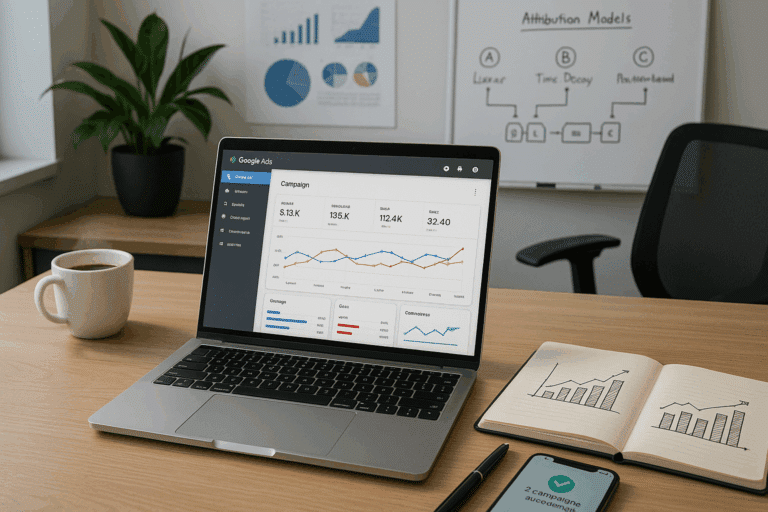In digital marketing, this key can take the form of a meticulously crafted, data-driven strategy. However, the underlying secret behind turning that key effectively often boils down to one crucial aspect: selecting the perfect attribution window for your marketing strategy. 🎯
As intriguing as it may sound, the concept of the attribution window is frequently misunderstood or even overlooked by many marketers. Yet, it holds the power to significantly impact your marketing success. This article aims to demystify the concept of attribution windows, providing you with a comprehensive guide on how to choose the perfect one for your marketing strategy.
Attribution windows are paramount to understanding how your customers interact with your marketing efforts over a specific time period. They provide insights into the customer’s journey and help you identify what is working and what isn’t. 🕵️♂️ However, the challenge lies in determining the appropriate length for your attribution window. An ideal window varies for different businesses, depending on factors such as their sales cycle, type of product or service, and marketing objectives.
In the following sections, we will delve into the nitty-gritty of attribution windows, discussing their importance and the factors that influence their selection. Further, we will explore various types of attribution models and their role in determining the right window. To help you make an informed decision, we will also present some real-life scenarios and case studies. By the end of this article, you will be well-equipped to choose the perfect attribution window that aligns with your marketing goals, thereby unlocking the door to your marketing success. 🗝️
While the topic of attribution windows might seem a bit daunting at first, the truth is, once you understand its nuances and implications, it becomes an incredibly powerful tool in your marketing arsenal. In the world of digital marketing, where data is king 👑, having the right attribution window can mean the difference between a good and a great marketing strategy.
It’s time to put on your analytical hats! 🎩 As we venture deeper into the world of attribution windows, you will find that the topic is not as complex as it might appear on the surface. Rather, it’s a fascinating area of study that combines elements of data analysis, customer psychology, and strategic planning. It’s about understanding the journey of your customers, interpreting the data, and ultimately making informed decisions that can drive your marketing success.
So, whether you are a seasoned digital marketer, a startup founder, or an enthusiast looking to level up your marketing game, this article is for you. Let’s dive right in and unlock the mysteries of attribution windows. Are you ready to take your marketing strategy to the next level? Let’s go! 🚀
Understanding Attribution Windows in Digital Marketing
Unlocking the potential of your digital marketing strategy requires a comprehensive understanding of key concepts and techniques. One such concept is the attribution window, a crucial element that can significantly impact your campaign’s success. To make an informed decision, you need to grasp what an attribution window is, how it works, and its implications for your marketing strategy.
An attribution window, also known as a conversion window, refers to the period between a user’s interaction with an advertisement and the resulting conversion. This window can range from a few days to several weeks, depending on your business model and marketing objectives. It’s critical to understand that the length of your attribution window can influence your campaign performance data, affecting decisions on budget allocation, target audience, and advertising platforms.
Choosing the perfect attribution window for your marketing strategy is not a one-size-fits-all solution. It requires a deep understanding of your customer journey, business model, and marketing goals. Therefore, let’s dive deeper into the factors you should consider when setting your attribution window.
Factors to Consider When Choosing an Attribution Window
Understanding your customer journey is the first step in setting your attribution window. The customer journey refers to the process that a customer goes through from the initial interaction with your brand to the final conversion. This journey can vary significantly across different industries and products, making it vital to tailor your attribution window to your specific business model.
Consider, for instance, the buying cycle of a high-end luxury item compared to a day-to-day consumer product. The former likely has a longer buying cycle, requiring a broader attribution window to capture all relevant interactions. On the other hand, a shorter attribution window might suffice for everyday products with faster purchasing decisions.
Another essential factor is the platform you’re using for your digital marketing campaigns. Different platforms have different default attribution windows, and understanding these can help you make informed decisions. For example, Facebook’s default attribution window is 28 days for click-through conversions and one day for view-through conversions, while Google Ads uses a 30-day window for both.
Comparing Attribution Windows Across Different Platforms
Understanding the default attribution windows of different advertising platforms can provide valuable insight into how each platform credits conversions. Here is a comparison table showing the default attribution windows of some popular platforms:
| Platform | Click-Through Attribution Window | View-Through Attribution Window |
|---|---|---|
| Facebook Ads | 28 days | 1 day |
| Google Ads | 30 days | 30 days |
| LinkedIn Ads | 30 days | 7 days |
| Twitter Ads | 30 days | 1 day |
This table should serve as a starting point when choosing the ideal attribution window for your campaign. However, remember that these default settings can be modified to better suit your marketing objectives and customer journey. To learn more about this, watch the following YouTube video: “How to Set Up Conversion Tracking on Google Ads and Facebook Ads” by Surfside PPC.
Adjusting Your Attribution Window for Optimal Results
After understanding the basics of attribution windows and considering the necessary factors, the next step is to adjust your attribution window to optimize your campaign results. The following steps provide a practical guide on how to go about this:
- Analyze your customer journey: Consider factors such as the length of the buying cycle, the complexity of the product, and the customer’s decision-making process.
- Consider your marketing objectives: If your objective is to drive immediate sales, a shorter attribution window may be suitable. However, for brand awareness or customer retention, a longer window might be more appropriate.
- Test different settings: Experiment with different attribution window lengths and monitor the impact on your campaign results. This can provide valuable insights into what works best for your business.
To better understand how to adjust your attribution window, watch the YouTube video: “Understanding Attribution Windows in Digital Marketing” by WordStream. Remember, the optimal attribution window is one that best reflects your customer journey and aligns with your marketing objectives.
Takeaways: How to Leverage Attribution Windows for Success
Attribution windows are a critical aspect of any digital marketing strategy. They provide valuable insights into your customers’ behavior, helping you understand the effectiveness of your marketing efforts. However, choosing the perfect attribution window requires a deep understanding of your customer journey, your marketing objectives, and the specifics of your chosen advertising platform.
To leverage the power of attribution windows, always remember to keep your customer journey at the forefront of your decision-making process. Tailor your attribution window to reflect the buying cycle of your product or service, and don’t be afraid to experiment with different settings to find what works best for your business.
Lastly, don’t forget to check out the YouTube videos mentioned above to gain more insights into attribution windows. Happy marketing! 😊

Conclusion
In conclusion, we have made a comprehensive exploration of the intricate world of IT and engineering. As we recapitulate the main points, it’s essential to revisit the initial goal of this article – to simplify and make comprehensible the complex concepts in these fields. From the fundamental principles of software engineering to the latest trends in IT, we’ve covered an extensive range of topics that are crucial for anyone involved in these industries.
One of the principal points covered was the vital role of software engineering in today’s digital world. We’ve delved into its basic principles, the design and maintenance processes involved, and the numerous software models in use today. We’ve established that a solid understanding of these concepts isn’t just a nice-to-have, but a must-have for any aspiring software engineer. 📚
We then transitioned into the sphere of IT, unraveling its multiple layers and highlighting its immense potential in today’s world. We’ve examined its broad scope, from the management of computer systems and data to the development of network systems and infrastructures. We’ve also touched on the cutting-edge trends in IT like Artificial Intelligence, Blockchain, and Internet of Things, reinforcing the need for continuous learning in this rapidly evolving field. 💻
We’ve also taken the time to explore the intersection of IT and engineering, highlighting how these two fields complement each other. In doing so, we have underscored the importance of having a dual knowledge base in both areas for maximum efficiency and productivity in the digital world.
Above all, we’ve aimed to break down these complex topics into digestible pieces, simplifying the jargon and technical terms into understandable language. Our goal was not just to inform, but also to inspire and spark curiosity in the reader. If there’s anything that you would like to learn more about, or if you have thoughts and perspectives to share, we encourage you to leave a comment below. Your insights are valuable and contribute to a richer understanding of these topics. 🎯
Don’t forget to share this article with your colleagues, friends, or anyone you believe would benefit from this information. Remember, knowledge is power, but it is even more powerful when shared.
And finally, if you wish to apply what you have learned from this article in your career or daily life, we wholeheartedly encourage you to do so. Practical application is the best way to consolidate understanding and acquire proficiency.
As we draw this article to a close, remember that learning is a lifelong journey, especially in the dynamic fields of IT and engineering. Stay curious, keep learning, and always strive to simplify the complex.
For further reading, check out these resources:
1. [Software Engineering: A Practitioner’s Approach by Roger Pressman](https://www.amazon.com/Software-Engineering-Practitioners-Roger-Pressman/dp/0078022126)📖
2. [Information Technology: The Management Challenge by James A. Senn](https://www.amazon.com/Information-Technology-Management-Challenge-James/dp/0201550731)💡
As ever, keep exploring, keep questioning, and keep innovating. Until next time. 👋
Back to top



